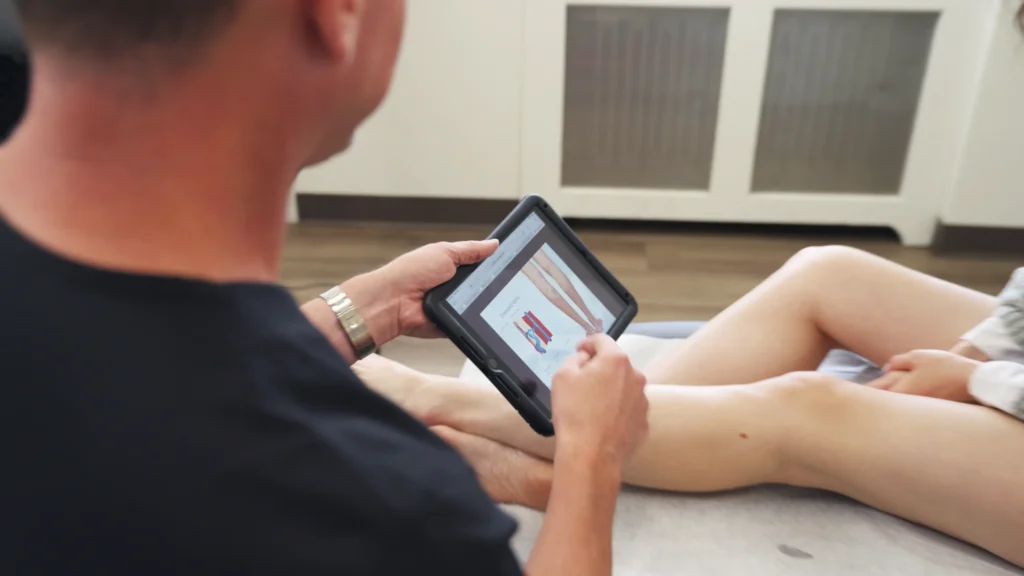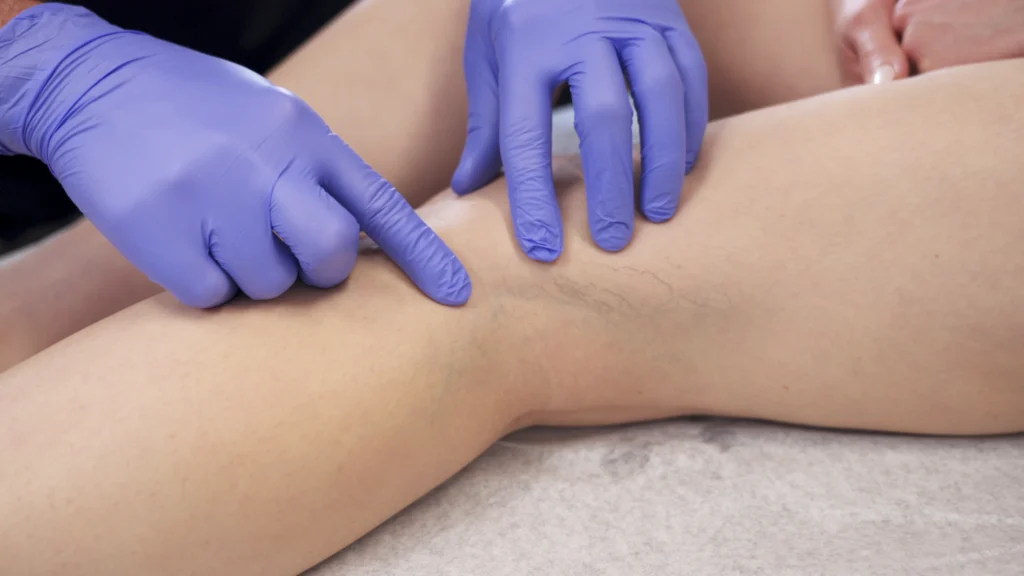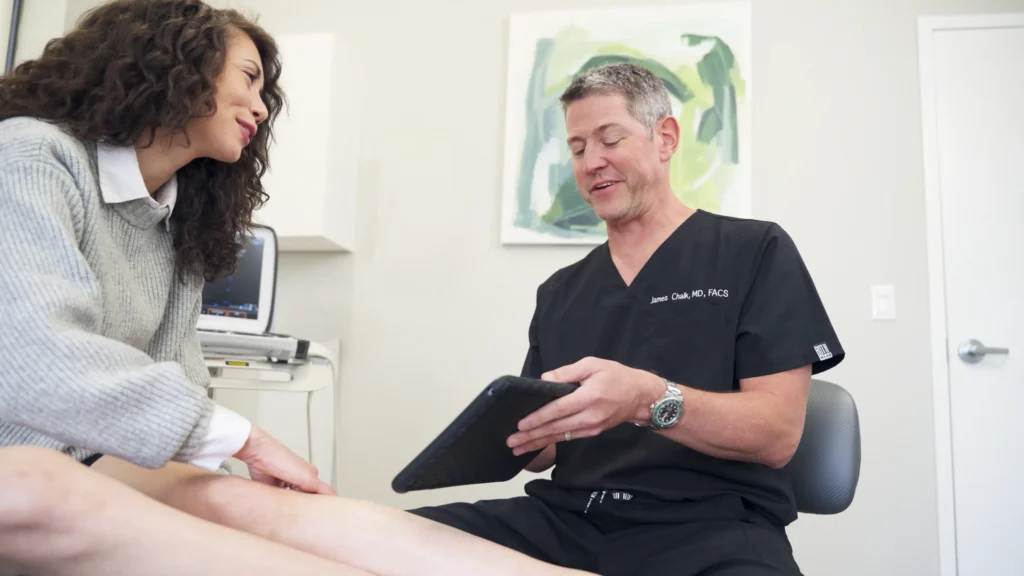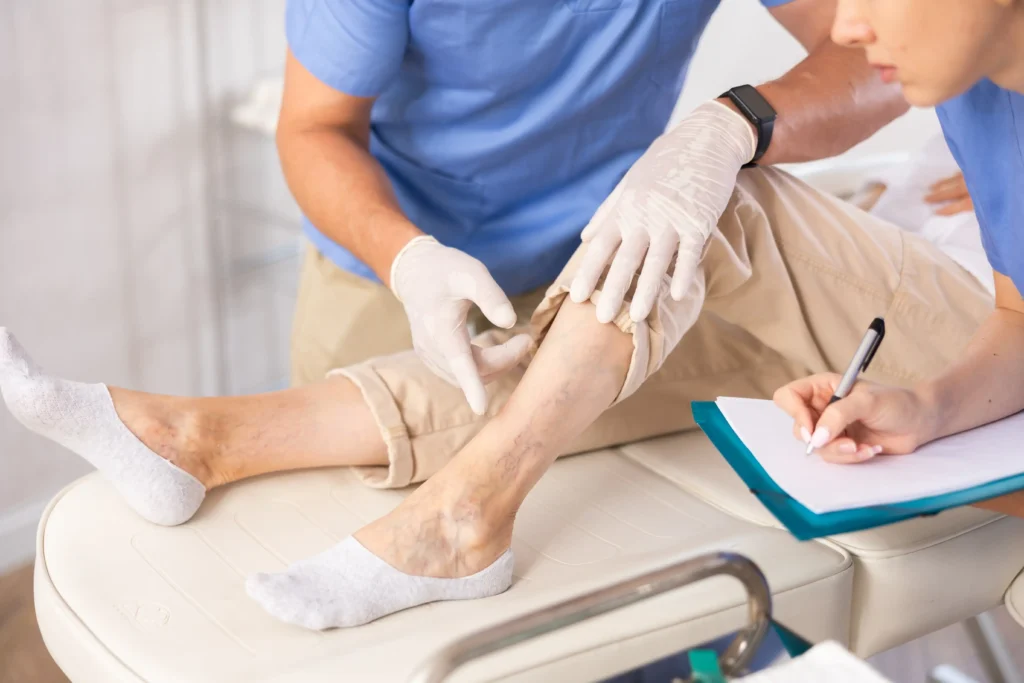UFE Embolization: Minimally Invasive Treatment for Fibroids
You experience persistent abdominal bloating, heavy periods, and relentless pelvic pain, symptoms that disrupt your daily life. You’ve been told these issues are due to uterine fibroids, but you don’t want to undergo surgery, so you delay treatment, and the symptoms only worsen. But what if you could treat uterine fibroids without significant downtime or surgical risks?
At Vein Treatment, we understand how uterine fibroids can impact your quality of life. That’s why we’re proud to offer UFE embolization, a cutting-edge, minimally invasive treatment that delivers long-lasting relief without surgery or considerable downtime. If you’re seeking an effective way to manage your fibroids without major surgery, this article will guide you through the benefits of uterine fibroid embolization and how it could transform your life.
What Is UFE Embolization?
UFE embolization, or uterine fibroid embolization, is a revolutionary, minimally invasive procedure that can treat uterine fibroids effectively. Unlike traditional surgical options such as hysterectomy or myomectomy, the UFE procedure involves no incisions, making it an excellent option for individuals who want a faster recovery and minimal risks.
During fibroid embolization, a physician inserts a tiny catheter through a small incision, usually in the wrist or groin. The catheter is guided by advanced imaging and directed to the arteries supplying blood to the fibroids. Tiny embolic agents are injected to block these arteries, cutting off the fibroids’ blood supply. Without nourishment, the fibroids shrink, and symptoms improve.
Benefits of UFE Embolization
1. Minimally Invasive Nature
One of the most compelling benefits of the uterine fibroid embolization procedure is that it is minimally invasive, eliminating the need for large incisions or extensive tissue disruption. Instead, a tiny incision, about the size of a pencil tip, is made in the wrist or groin to insert a catheter. This significantly reduces the risks of complications commonly associated with traditional surgeries, such as infections, excessive blood loss, and scarring.
Additionally, this approach minimizes patient discomfort and promotes faster healing. Most patients can leave the clinic within a few hours of the procedure, allowing them to recover in the comfort of their own homes. By avoiding major surgery, UFE offers a safer, less intimidating option for individuals seeking effective relief from fibroids.
2. Fast Recovery Time
Recovery after UFE embolization is notably faster than the extended recovery periods required for surgical alternatives like hysterectomy or myomectomy. Most patients report only mild cramping and fatigue in the first few days post-procedure, which can be managed with over-the-counter or prescribed pain medications. Unlike surgery, which may necessitate several weeks of downtime and lifestyle adjustments, many individuals return to their normal activities, including work, exercise, and family responsibilities, within a week.
This shorter recovery time not only reduces the disruption to your daily life but also lowers the emotional and financial burden associated with prolonged healing. Whether you’re balancing a demanding career or caregiving responsibilities, UFE allows you to achieve relief without stepping away from your obligations for long.
3. Long-Lasting Results
The results of uterine fibroid embolization UFE are effective and enduring, making it a preferred option for managing fibroid symptoms. The procedure triggers gradual shrinkage over weeks and months by permanently cutting off the blood supply to fibroids. Clinical studies indicate that most patients experience significant improvements in their symptoms, including lighter and shorter menstrual periods, reduced pelvic pain, diminished bloating, and relief from frequent urination caused by fibroid pressure.
These outcomes are long-lasting, with many patients reporting sustained symptom relief for years. Additionally, unlike some treatments that focus solely on symptom management, UFE targets the root cause—fibroids themselves—offering a more comprehensive solution.
4. Preservation of the Uterus
One of the most significant advantages of UFE embolization is its ability to treat fibroids without requiring the removal of the uterus. This is especially important for individuals who may want to maintain their fertility or who are not ready to undergo a hysterectomy due to its physical and emotional implications. Retaining the uterus also helps preserve hormonal balance and reduces the risk of complications associated with uterine removal, such as pelvic organ prolapse.
For many patients, knowing they can achieve effective symptom relief while preserving their reproductive health and overall anatomy provides immense peace of mind. This aspect of UFE makes it a valuable option for those seeking a less invasive yet highly effective treatment.
What to Expect During the UFE Procedure
The uterine fibroid embolization procedure is performed under local anesthesia with sedation to ensure your comfort. Here’s a step-by-step overview of what you can expect:
- Preparation: After discussing your medical history and treatment goals, your doctor will guide you through the procedure and answer any questions.
- Catheter Insertion: A tiny incision is made in the wrist or groin area to insert the catheter.
- Treating the Fibroids: Using X-ray guidance, the catheter is navigated to the arteries feeding the fibroids, and embolic agents are released to block the blood flow to the fibroids.
- Post-Procedure Recovery: Most patients are monitored for a few hours before being discharged to recover at home.
Frequently Asked Questions About UFE
Is UFE embolization painful?
Most patients report minimal discomfort during the procedure due to local anesthesia and sedation. Mild cramping may occur afterward, but it’s manageable with prescribed medications.
How long does the UFE procedure take?
The procedure typically takes one to two hours, depending on the size and number of fibroids.
Will my fibroids return after UFE?
While UFE effectively treats existing fibroids, new fibroids can develop. However, the procedure provides long-lasting relief for most patients.
Does UFE affect fertility?
UFE preserves the uterus, but its impact on fertility varies. If future pregnancies are a priority, discuss this with your vein specialist.
If uterine fibroids are affecting your quality of life, don’t wait to explore your treatment options. UFE embolization offers a minimally invasive, effective solution that empowers you to regain control of your health. At Vein Treatment, our board-certified vein doctors specialize in minimally invasive procedures and are trained at Ivy League institutions. From initial consultation to post-procedure follow-up, we provide personalized support at every step. Learn about our vein clinics, or contact us to schedule a consultation today.








